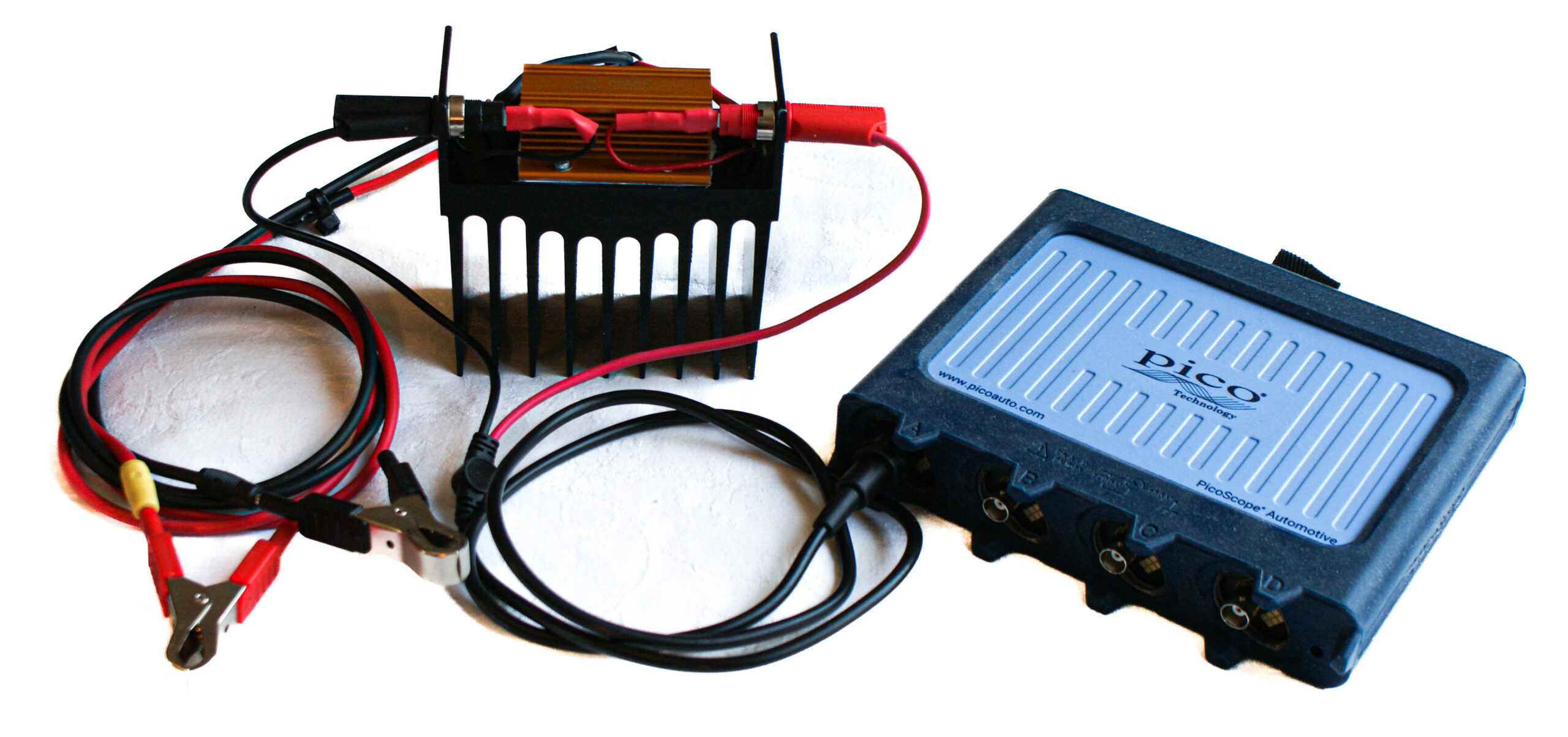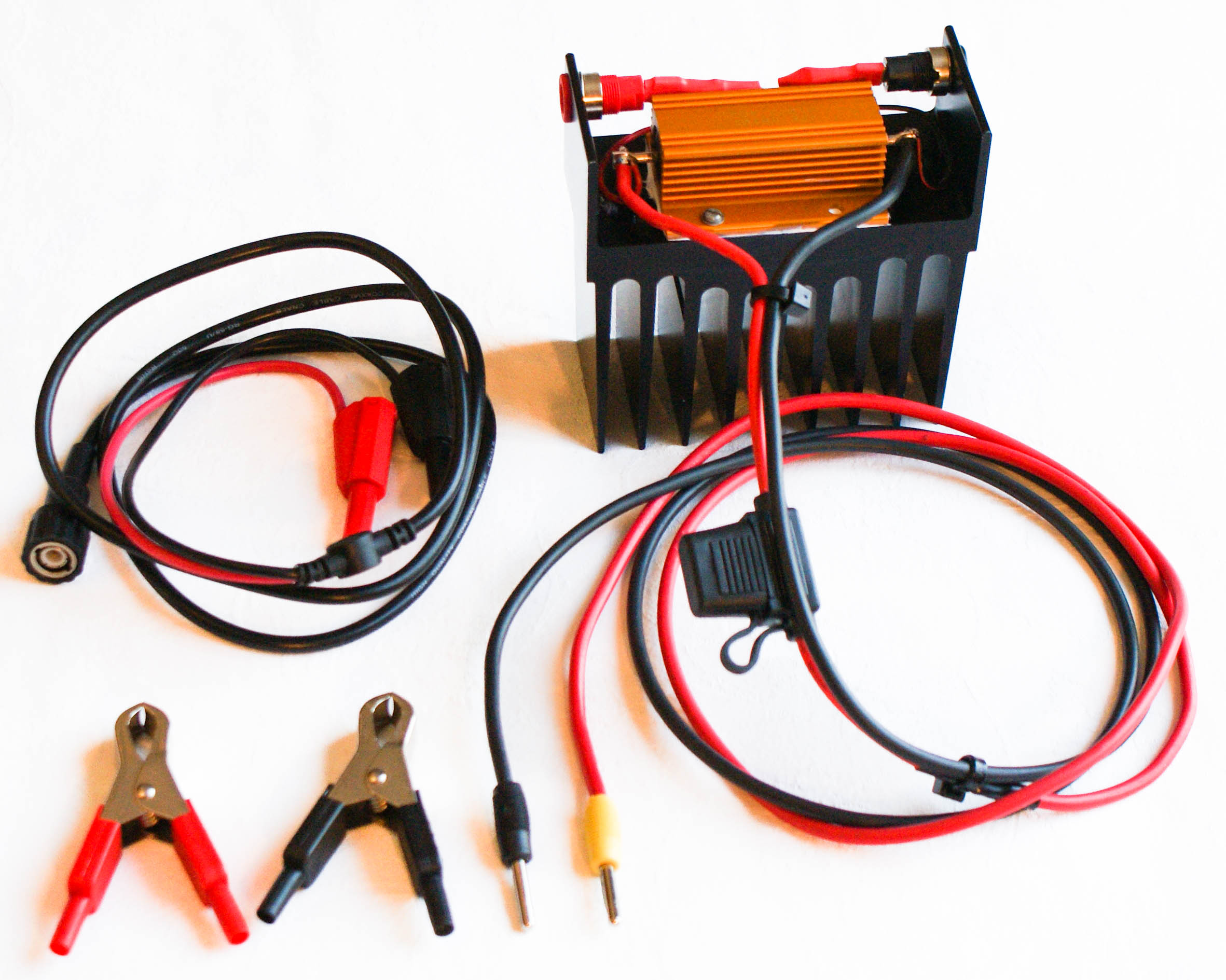Garage Lube Parasitic Drain Tester
New Parasitic Drain Tester
The Garage Lube Parasitic Drain Tester is a simple device, ideal for testing parasitic drain, safely, over long periods of time.
Connecting to the PicoScope
Connect the two 4mm connectors on the supplied test lead to the red and black 4mm sockets on the sides of the heatsink. These sockets are connected directly to the resistor (Kelvin Sense) which means that the reading will be accurate. Connect the BNC connector to your PicoScope. The red lead is the channel input and the black lead is channel ground. You can also use a Pico Premium Test Lead which provides additional length if your PicoScope isn't near to the Parasitic Drain Tester.
The High Current Leads
The Black High-Current Lead is connected directly to the resistor, whereas the red lead (with the yellow plug) is connected via the resistor.
Attach the battery clips (or another appropriate accessory) to the ends of the cable. Ensure that the ignition is off. Usually, the negative terminal of the battery is disconnected and the black lead is connected to negative. The red lead with the yellow plug is connected to the vehicle body. However, you can also connect into the positive battery lead if more convenient.

PicoScope Setup
You can just monitor voltage and mentally convert it to current. At 30A (the maximum) the voltage out will be 3V so the 5V range would be appropriate. You can create a custom probe for your Parasitic Drain Tester. Using PicoScope 7 and a 4x25 or 4x25A PicoScope, you can setup the scope to 5000 seconds per division which will yield just less than 14 hours of sampling at 5000 samples per second. Using PicoLog, you can monitor parasitic drain for days.
Current Shunt
The Parasitic Drain Tester can be used as a general purpose current shunt to measure currents up to 30A, using you PicoScope or a multi-meter.
Please note that it is inteded for low voltage applications only.
FAQ and Warnings
Why is it not built in a box?
The Parasitic Drain Tester dissipates power when high currents are being measured.
The heat-sink needs to be open to dissipate that heat. Enclosing the heat-sink
would substantially reduce the current able to be measured by the Parasitic Drain
Tester. Never cover or enclose the unit, or it may overheat.
When high currents are measured, the unit's temperature will rise. Beware of hot surfaces when testing with high current.
Please note that it is intended for low voltage applications only.
Training and Technical Information
See our Parasitic Drain Tester Technical Page on our training website.
Under Development. Pricing and Delivery Times coming soon.
Parasitic Drain Tester Kit
- Parasitic Drain Tester Components
- 1 x Resistor 0.1 Ohm 100W 5%
- 2 x 4mm Sockets for BNC Test Lead
- 1 x ATS Fuse Holder with 30A Blade Fuse
- 2 x 1m High-current Cables, with...
- 2 x 30A 4mm Plugs for Battery Clips
- 1 x Heat-sink
- 1 x 1m Shrouded BNC to Shrouded 4mm Stackable Plugs Test Lead
- 2 x Battery Clip PICO-TA157 and PICO-TA158
| Resistance | 0.1 Ohm |
| Output Voltage | 100mV/A |
| Tolerance | 5% |
| Max Continuous Current | 20A |
| Max Peak Current (<20sec) | 30A |
| Max Voltage | 50V |
| Fuse | 30A ATS |
| Heat-sink | 1.5K/W |
| Heat-sink Dimensions | 114x120x50mm |
| The Heat-sink is electrically isolated | |

